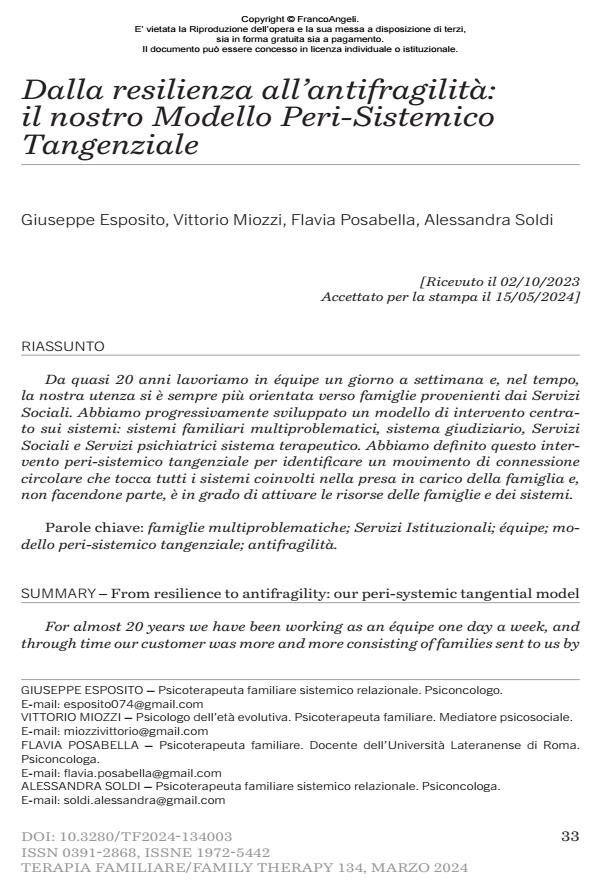From resilience to antifragility: our peri-systemic tangential model
Journal title TERAPIA FAMILIARE
Author/s Giuseppe Esposito, Vittorio Miozzi, Flavia Posabella, Alessandra Soldi
Publishing Year 2024 Issue 2024/134
Language Italian Pages 16 P. 33-48 File size 618 KB
DOI 10.3280/TF2024-134003
DOI is like a bar code for intellectual property: to have more infomation
click here
Below, you can see the article first page
If you want to buy this article in PDF format, you can do it, following the instructions to buy download credits

FrancoAngeli is member of Publishers International Linking Association, Inc (PILA), a not-for-profit association which run the CrossRef service enabling links to and from online scholarly content.
For almost 20 years we have been working as an équipe one day a week, and through time our customer was more and more consisting of families sent to us by the social services. We have progressively developed an intervention model based on systems: multiproblematic families systems, judicial system, Social Services and psychiatric Services, therapeutic system. We refer to this kind of intervention as perisystemic tangential, to identify a movement of circular connection that touches all the systems that are involved in taking charge of the family and, without being part of it, is capable of activating the families’ and systems’ resources.
Keywords: multi-problem families; Institutional Services; team; tangential peri-systemic model; antifragility.
Giuseppe Esposito, Vittorio Miozzi, Flavia Posabella, Alessandra Soldi, Dalla resilienza all’antifragilità: il nostro Modello Peri-Sistemico Tangenziale in "TERAPIA FAMILIARE" 134/2024, pp 33-48, DOI: 10.3280/TF2024-134003